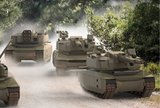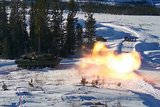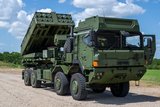ACV poised to pass significant milestone
The first Amphibious Combat Vehicles (ACVs) for operational use by the USMC will be delivered by prime contractor BAE Systems by the end of October.
Shephard has learned that the ACV programme recently completed Initial Operational Test and Evaluation (IOT&E) and also gained approval for initial fielding on 28 September.
A spokesperson from BAE Systems said that now testing is complete, ‘a full-rate production decision is expected Q1 Fiscal Year 2021’.
BAE Systems has delivered a total of 48 ACVs so far under a Low Rate Initial Production (LRIP) contract for more than 100 vehicles (now thought to be 116
Already have an account? Log in
Want to keep reading this article?
More from Land Warfare
-
![Hungary set to begin using Hero 400 loitering munitions]()
Hungary set to begin using Hero 400 loitering munitions
Developed by Israel's Uvision and with systems being sold in the thousands to multiple European NATO countries and the US, the Hero family of loitering systems is also in production in the US and Italy, the latter through Rheinmetall.
-
![Light Reconnaissance Strike – enabling a vital mission set (Studio)]()
Light Reconnaissance Strike – enabling a vital mission set (Studio)
A new system-of-systems concept will unlock digital integration of sensors and weapons for Light Forces, allowing them to shape the battlefield environment on their own terms and upgrade legacy platforms.
-
![Lockheed Martin to look further afield for GMARS rocket system opportunities]()
Lockheed Martin to look further afield for GMARS rocket system opportunities
The HX truck is already in use in many NATO and allied countries around the world as a logistics vehicle and carrier for high-value systems, including missile firing weapons, so its use for the Global Mobile Artillery Rocket System makes logistical sense.






















